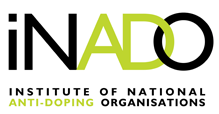Discrimination of recombinant from natural human growth hormone using DNA aptamers / John G. Bruno, Maria P. Carrillo, Taylor Phillips, Allison Edge. - (Journal of Biomolecular Techniques 22 (2011) 1 (April) ; p. 27-36)
- PMID: 21455479
- PMCID: PMC3059541
Abstract
Detection of athletes who use synthetic human growth hormone (hGH; or somatotropin) to enhance physical strength and obtain an advantage in competitive sports is a formidable problem, as rhGH is virtually identical to the natural pituitary hormone. However, some post-translational and other modifications have been documented by chromatographic separation and mass spectrometry (MS) in a small percentage of rhGH. In the present work, development of DNA aptamers against research-grade rhGH and natural hGH with adsorption of the rhGH aptamers against natural hGH was shown to produce a small family of aptamer sequences that bound consistently with greater affinity to rhGH over a low nanogram-to-microgram range in ELISA-like microplate assays. This collection of rhGH discriminatory aptamer sequences shared some short sequence segments and secondary structural features. The top rhGH discriminatory aptamers also appeared to cross-react with human myoglobin and BSA but not with bone collagen peptides and an unrelated viral envelope peptide. The cross-reactivity results suggested several strings of up to five consecutive amino acids that might serve as common epitopes for aptamer binding. SDS-PAGE revealed that the rhGH existed largely as a 45-kDa dimer, and the natural hGH was almost exclusively monomeric. The existence of the rhGH dimer suggests that a discontinuous "bridge" epitope may exist on the rhGH, which spans the subunits, thereby accounting somewhat for the difference in detection. Overall, these results suggest that aptamers might be useful for routine, presumptive laboratory screening to identify athletes who are potentially cheating by administration of rhGH.
